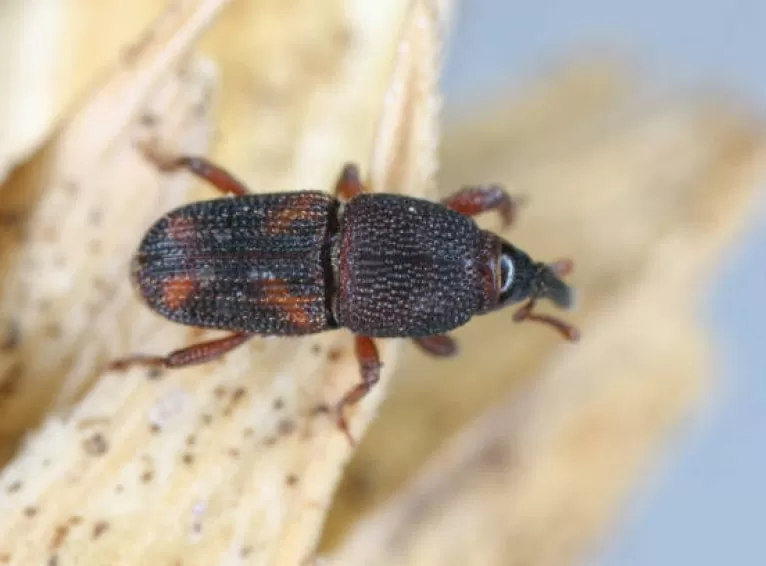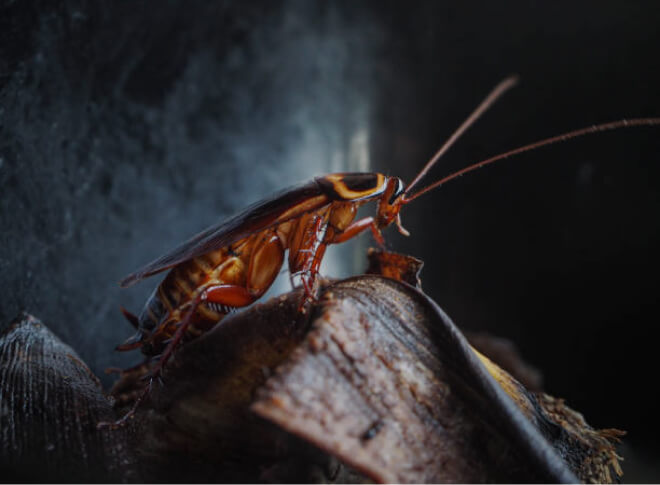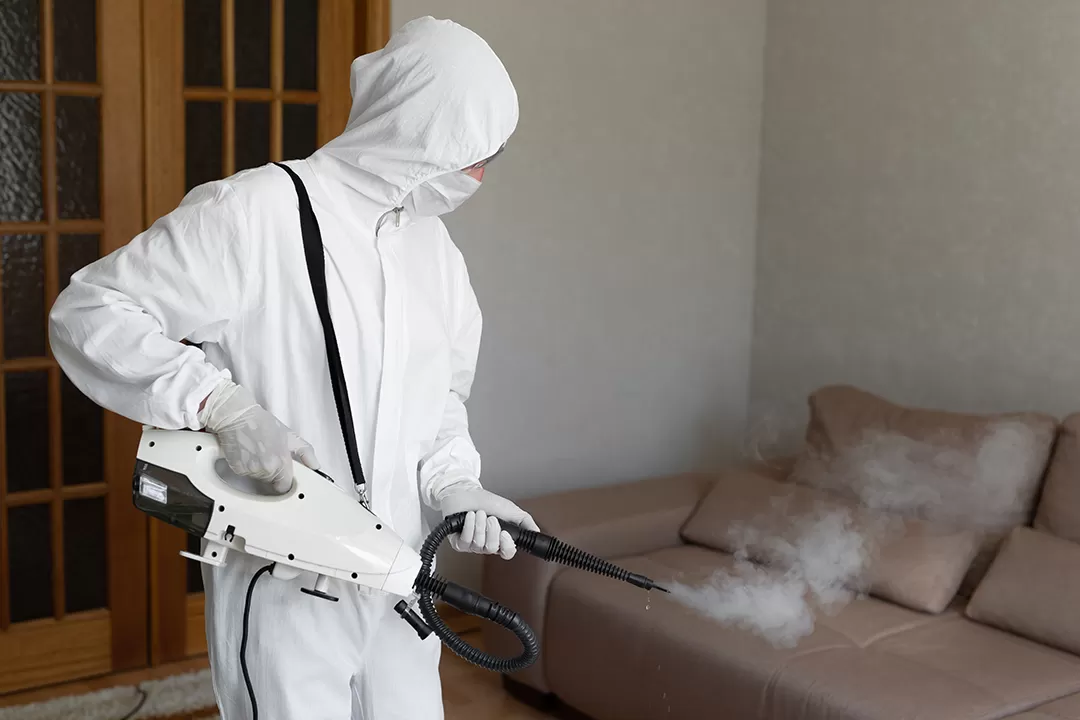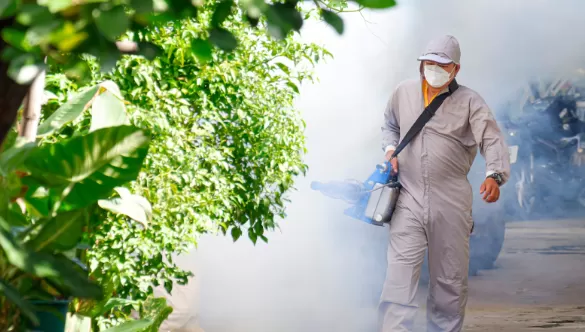Termites are often called “silent destroyers” for good reason. These tiny insects can wreak havoc on homes and structures, causing billions of dollars in damage each year. Among the various types of termites, drywood termites stand out due to their unique characteristics and habits.
In this blog, we’ll delve into what you need to know about drywood termites, from their biology to prevention and treatment.
1. Drywood Termites: An Overview
Drywood termites, often considered one of the most destructive pests to infest wooden structures, have unique characteristics and behaviours that set them apart from other termite species. In this overview, we’ll delve deeper into the world of drywood termites, shedding light on their appearance, habits, and the damage they can inflict.
Appearance
Drywood termites belong to the family Kalotermitidae and are relatively small insects, measuring around 3/8 to 1 inch (9.5 to 25.4 mm) in length. They are typically pale or light brown in colour. Unlike their subterranean counterparts, drywood termites do not have to venture outside of their wooden homes for moisture since they can extract enough moisture from the wood they consume.
Habitat
One of the distinguishing features of drywood termites is their ability to create colonies within the wood they infest. This is in contrast to subterranean termites, which build their nests underground and rely on mud tunnels to access their food sources. Drywood termites, on the other hand, establish their colonies directly within the wooden structures they inhabit, making them incredibly elusive and hard to detect.
Diet
As their name suggests, drywood termites primarily feed on dry wood. They are indiscriminate eaters and can damage anything made of wood, including furniture, structural components of homes, wooden decor, and even wooden ships. Their ability to thrive on dry wood without requiring contact with the soil sets them apart from subterranean termites, which depend on soil for moisture.
Colonies
Drywood termite colonies are relatively smaller in size compared to subterranean termite colonies. A typical drywood termite colony may contain anywhere from a few hundred to several thousand termites. These colonies are self-contained within the wooden structure they infest, which can be a piece of furniture, a wall, or even a wooden sculpture. Unlike subterranean termites, drywood termites do not rely on a centralised underground nest.
2. Life Cycle of Drywood Termites
Understanding the life cycle of drywood termites is crucial for effective prevention and control:
Reproduction
Drywood termite colonies reproduce through swarming. Winged reproductive termites, known as “alates,” leave the colony during a swarm. Swarming typically occurs in late spring or early summer when environmental conditions are favourable.
Colony Establishment
After a successful swarm, the alates find a suitable piece of wood to infest. They shed their wings and start excavating tunnels within the wood to form a new colony. Mating takes place, and the queen begins laying eggs.
Development
The eggs hatch into nymphs, which molt multiple times to become either workers, soldiers, or reproductives. Workers are responsible for foraging for food, feeding other colony members, and excavating tunnels, while soldiers protect the colony from threats.
Lifespan
Drywood termites have relatively long lifespans. Queens can live for several years, continuously laying eggs to sustain the colony’s growth.
3. Signs of Drywood Termite Infestation
Detecting drywood termites early is essential to minimise damage. Look out for the following signs of a termite infestation:
Tiny Holes in Wood
Drywood termites create tiny holes in the wood as they exit to discard waste. These holes, also known as “kick-out” holes, are often the most noticeable sign of a drywood termite infestation. They are typically about 1/16 to 1/8 inch in diameter and may appear as small piles of wood pellets (frass) beneath them.
Frass Accumulation
Drywood termites produce faecal pellets called “frass.” These pellets are typically hexagonal and vary in colour depending on the type of wood the termites are consuming. The presence of frass near infested wood is a strong indication of an ongoing infestation.
Hollow-Sounding Wood
When you tap on wood that is infested with drywood termites, it may produce a hollow, papery sound. This is because termites consume wood from the inside, leaving a thin veneer of wood on the surface.
Discarded Wings
After a termite swarm, you may find discarded wings near windowsills, doors, or on the floor. Swarming termites lose their wings once they find a suitable spot to establish a new colony.
Cracked or Distorted Paint
Drywood termites often create tunnels just beneath the surface of painted or finished wood. As they move through the wood, they can cause the paint to crack or distort, which can be a subtle sign of infestation.
Visible Termites or Soldiers
In some cases, you may actually see the termites themselves. Drywood termites are pale, wingless, and relatively small (about 3/8 to 1 inch in length). Soldiers have larger, hardened heads and powerful jaws. If you spot termites or soldiers, it’s a clear indication of an infestation.
Wood Damage
As the infestation progresses, you may notice the wood becoming weak, brittle, or disintegrating easily when touched. This damage can extend to furniture, structural elements of your home, or other wooden items.
Mud Tubes
While drywood termites do not build mud tubes like subterranean termites, they may create small tunnels or galleries within the wood. These tunnels can sometimes be visible on the surface of the infested wood.
Swarms
Witnessing a termite swarm indoors is a surefire sign of a nearby drywood termite colony. Swarming typically occurs in spring or early summer when conditions are right.
Damage Patterns
Drywood termites tend to create irregular and intricate patterns of damage within the wood, often following the grain. This can be different from subterranean termites, which typically create smoother, mud-lined tunnels.
4. Prevention
Preventing a termite infestation is crucial, and there are several steps you can take:
Regular Inspections
Conduct routine inspections of your home, especially wooden structures and furniture. Early detection is key to preventing extensive damage.
Seal Cracks and Gaps
Seal any cracks or gaps in your home’s foundation, walls, and roof. Drywood termites can enter through even small openings.
Wood-to-Soil Contact
Minimise or eliminate wood-to-soil contact around your home. Termites often use soil as a bridge to access wooden structures.
Store Wood Properly
Keep firewood, lumber, and other wooden items away from your home and elevated off the ground. Store them in a dry, well-ventilated area.
Use Termite-Resistant Materials
Consider using pressure-treated or naturally termite-resistant wood for construction and furniture. These materials are less attractive to termites.
Protect Wooden Structures
Apply termite-resistant coatings or paints to wooden structures. This can act as a deterrent.
5. Treatment
If you suspect or confirm a drywood termite infestation, it’s advisable to seek professional pest control services. Treatment options may include:
Fumigation
Fumigation is one of the most effective methods for eliminating drywood termite infestations. The entire structure is tented, and a gas (usually sulfuryl fluoride) is introduced to kill the termites. Fumigation is highly effective but requires vacating the premises for a period.
Heat Treatment
Heat treatment involves raising the temperature within the infested area to levels that are lethal to termites. This method can be effective for localised infestations but may not penetrate deeply into structural elements.
Spot Treatment
Target specific areas with liquid termiticides or foams. This is often used for smaller, isolated infestations or as a preventive measure in vulnerable areas.
Localised Wood Replacement
In cases of localised damage, it may be necessary to replace infested wood. Professionals should do this to ensure that all infested timber is removed.
Conclusion
In conclusion, drywood termites are a formidable threat to wooden structures and require vigilance for detection and control. Regular inspections, proper maintenance, and timely intervention are essential to protect your home from the destructive power of these silent invaders. If you suspect a termite infestation, don’t hesitate to consult a pest control professional to assess the situation and determine the most effective course of action.







